the World Wars on car technology
The two World Wars of the twentieth century had ramifications in almost every aspect of society, politics, and economics.
The huge resources brought to bear by the industrialized powers, and the desire for a competitive advantage (of whatever type) over the enemy means that there was a huge amount of technological innovation during the ten years that the world was at war in the 1910s and 1930s/40s
-
 1914
1914 - Comparing the situation at the outbreak of WWI with that of the end of WWII indicates how far technology developed in that period.WWI was begun with cavalry charges; WWII was ended with nuclear weapons. In between was a period of only
31 years.
-
 1945
1945
Most of the writing on the technological innovations of this period centers, understandably, on military developments. However, there was a trickle-down effect when it came to other areas of technology.
-
Cars, for example, developed a great deal in this period. As a relatively new technology, cars were little used at the outset of WWI. However, their ability to transport goods and troops meant that they soon became invaluable, something that only increased during WWII.
-
As a result, there was plenty of resources invested in improving car technology, much of which affected the civilian car industry. Here you can find out more about military auto insurance discounts.
Indeed, today’s cars have been undoubtedly shaped by the developments made during the wars. This article will examine those, and show how you’re driving a piece of military history.
Off-road technology
One of the most crucial features of battlefields, particularly those of the two wars, is that they are not always accessible by road.
WWI
At the beginning of World War One, the cars that were used were mostly for transporting VIPs around, including generals at the beginning of the war.
The most famous World War One use of cars was during the Battle of the Marne when Paris taxis were repurposed to transport soldiers to the front.
These ‘taxis of the Marne’ were useful insofar as they could take troops over the roads out of Paris; however, cars were unable to traverse the muddy and shell- marked areas near the front.
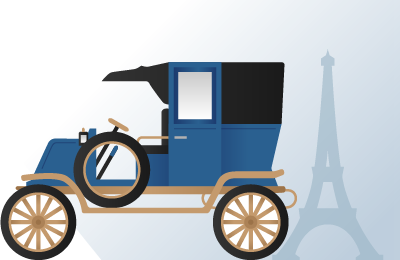
One of the most famous technological developments of World War One was the tank.
These were designed by the British Admiralty to provide a vehicle capable of transporting men across No Man’s Land to the German trenches.
Although WWI tanks were rudimentary and had little impact on the battlefield, one innovation that was critical was the ability of the tank to travel on mud and rough surfaces. Post-WWI, Renault was able to translate their tank-building skills into the production of tractors for farm use.
The first tractors look like tanks and have similar wheels to the initial tanks that were seen on the battlefields of the Western front.
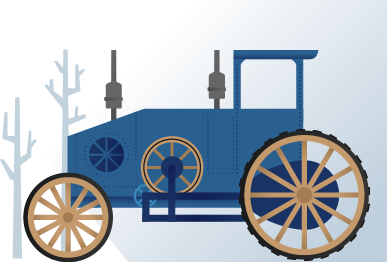
Read more: A Complete Guide to WW2 Tanks
WWII
By the start of World War Two, the major protagonists realized that they would need mobile off-road vehicles.
Pre-eminent in this respect was the development of the General Purpose vehicle by the U.S. military. Known by its acronym – GP – or ‘jeep’, this vehicle could transport troops quickly and efficiently over rugged terrain.
General Eisenhower described the jeep as the most important weapon of the war.

today
Today’s jeeps are little different when it comes to the fundamentals of car design, and the core concept of a lightweight but powerful car as being optimal for off-roading remains today.
Car Safety

Although it may seem counterintuitive for wars to increase safety – especially at a time when most vehicles were being fitted with guns – in fact, the world wars were a time when preventing one of your own soldiers dying was as useful as killing an enemy soldier.
As a result, innovations in vehicle safety were an area of active examination for military leaders.

One of the most obvious ways that vehicles could be made safer during the war is for them to not explode when they were hit by enemy fire. As a result, trucks and cars were regularly fitted with armor plating.

However, adding too much armor plating to a car had the potential to slow it down, thus making it more vulnerable to the enemy. Therefore, scientists had to discover the optimal amount of armor to place on a car, and to strive for strong, yet light materials.
This naturally had an impact on reinforcements to modern cars, particularly developing technology to protect against side impacts.
safety rim
A small, but important detail that emerged from the wars was the safety rim on wheels. These were developed by Chrysler and helped to prevent wheels from coming off the car in the event of a blowout.
Synthetic rubber and oil
One of the major problems faced by the Allies in World War Two was the fact that the Axis powers controlled most of the rubber-producing parts of the world.

Rubber is produced primarily in South-eastern Asia, and it was the Japanese need for this natural resource that led them to so urgently seek expansion through the European colonies of the region. The Japanese were able, therefore, to exercise a near-monopoly on rubber.
This not only meant that Japan could satisfy its own need for rubber, but it could also prevent its enemies from accessing the rubber. This made producing tires extremely difficult.
synthetic rubber
However, in 1940, Waldo Semon developed Ameripol – a synthetic rubber that was significantly cheaper and easier to produce than traditional rubber.
This meant that the Allies could easily produce the materials they needed for tires. By 1944, the Americans were artificially creating twice as much rubber as they had been importing prior to the war.

Indeed, the synthetic rubber developed in WWII makes up half the world’s current usage of rubber, meaning that the tires on your cars likely contain some of Ameripol’s descendants.
Engine technology
As well as benefitting from the innovations to the chassis and to tire production, engine technology developed a great deal, particularly because of World War Two.
During that time, there were two major developments to engine technology, much of which fed into the post-war civilian car industry. Companies such as Rolls-Royce and Messerschmitt both straddled the military aircraft/civilian car boundary, demonstrating how the technological leaps in one area fed into the other.
In particular, the development of ever-lighter engines was crucial in aviation technology during the war.
Aircraft engines
Aircraft engines effectively compete for over weight-to-power ratio, and this led to some extremely well-designed engines during the war.
The American P-51 Mustang, for example, had a top speed of 437 mph at 25,000 feet.
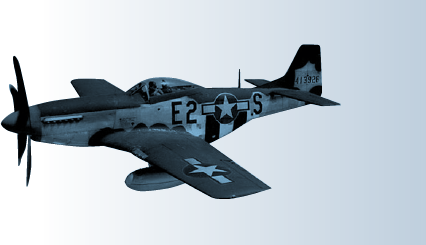
The Messerschmitt Bf 109 was known as the most maneuvrable plane in the sky, despite an engine of 40hp/L.
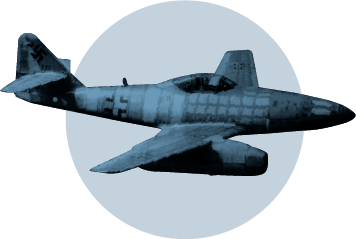
When one considers the fact that the most famous plane engines during the war were designed by Daimler-Benz, Rolls-Royce, and Packard (an American company that partnered with Studebaker), it demonstrates clearly how airplane technology fed into car technology

liquid cooling
A further development that is now standard in modern cars is liquid cooling for engines. Prior to WWII, engine coolant normally consisted of just water.
However, this was not acceptable for high-performing aircraft, and, as a result, it was necessary to develop coolants that had a higher boiling point. This led to the introduction of liquid coolants containing glycol, which is standard in modern cars.

Kick-starting car companies
As well as developing new technology, the World Wars were important in helping with the development of new companies.
As mechanized technology was relatively new at the outbreak of WWI, companies that won government contracts often had to rapidly expand and bring in their competitors to make consolidated companies.
Two major car companies effectively got their start in this way – both actually initially launched in other fields, and only moved into automotive design in the interwar years. Both BMW and Citroen, therefore, owe their existence to the World Wars.

BMW
BMW was formed out of a consolidation of Rapp Motorenwerke, Bayerische Flugzeugwerke, and Automobil Eisenach in 1916 when they built the BMW IIIa aircraft engine, which won a major government contract.
It was only after the war when German companies were forbidden from producing aircraft, that BMW began to move into manufacturing engines for cars.
Andre Citroen
Andre Citroen had a major contract to build armaments during WWI, and soon realized that, after the war, he would have a sizeable factory, but nothing to produce.
As a result, Citroen began to look into engine production. Their first car – the Citroen A 8CV ‘Torpedo’ was launched in March 1919, and kickstarted Citroen as a major automobile manufacturer.
If WWI saw the beginnings of car technology on a serious scale, WWII saw the mass market opening up.

One of the primary reasons for the jeep’s success on the consumer market in the 1940s and ‘50s was the fact that returning GIs were familiar with the jeep, and had grown attached to it during their time at war.
The World Wars not only created the car companies, but also the demand.
-
The relative post-war wealth of the American consumer caused a major boost for car manufacturers, as their goods were now affordable to huge numbers of Americans.
-
This was driven, in no small part, by the war itself: yet another example of how the war proved to be a major boon to the car industry, particularly in the United States.
Computers
Although not something intuitively linked with either the wars or cars, the development of computer technology was critical in both.
The most famous example of a computer during WWII was the machine built by Alan Turing to crack the German Enigma code at Bletchley Park.
However, the first digital computer was built by the British to crack the German Lorenz SZ-40 cipher. The computer contained over 1700 valves and gave a print out of its results.

While the colossus may seem rudimentary, it paved the way for modern computer technology, without which modern cars would be extremely different.
To give an example, a modern VW Jetta contains seven different computers, controlling internal processes, safety, as well as navigation.
While computer technology was most famously catalyzed by the Cold War (particularly the development of the Internet), it was the initial breakthroughs during WWII that set computer technology on the road to changing modern infrastructure – cars included.
Amphibious vehicles
Although often seen as a trivial or novelty approach to driving, the ‘Duck’ vehicles that exist in major tourist metropolises have a serious military background.
The DUKW (known as ‘duck’ by contemporaries) was used in the invasion of Sicily in July 1943 and were so successful that they were reused in the Normandy landings.
These vehicles were extremely durable, capable of being used in rough seas and on rough terrain.

Over twenty-thousand ducks were produced during World War II, and while there has been little need for amphibious vehicles in the interim, their presence on streets of cities like Seattle, San Francisco, and London is a testament to their durability.
Ultimately, therefore, the wars had a major impact on car technology.
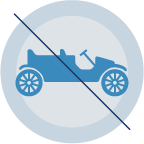
Although most countries suspended their civilian vehicle industries during the Second World War (much to the chagrin of Detroit car manufacturers) the large government contracts available, combined with the constant need for innovations meant that there were huge opportunities for manufacturers.
Much of the developments did not feed into the wider civilian population until after the war when the major manufacturers began implementing new technology on a mass basis.
- However, as a direct result of the war, modern cars are safer, more powerful, more efficient, and can be made more easily.
-
- The First World War took cars from a rarity to a valuable commodity, the Second World War took them to a mass market.
In both cases, it was the new technological innovations that drove these changes.
Sources and Further Reading:
- http://www.expertreviews.co.uk/technology/7907/top-inventions-and-technical- innovations-of-world-wa
- http://ww1centenary.oucs.ox.ac.uk/machineaesthetic/how-world-war-one-changed-the-car-you-drive-today/
- https://teachinghistory.org/history-content/ask-a-historian/24088
- https://www.historyonthenet.com/ww2-vehicles
- https://www.buyautoinsurance.com/does-auto-insurance-cover-engine-failure/
- https://www.jeep.com/







